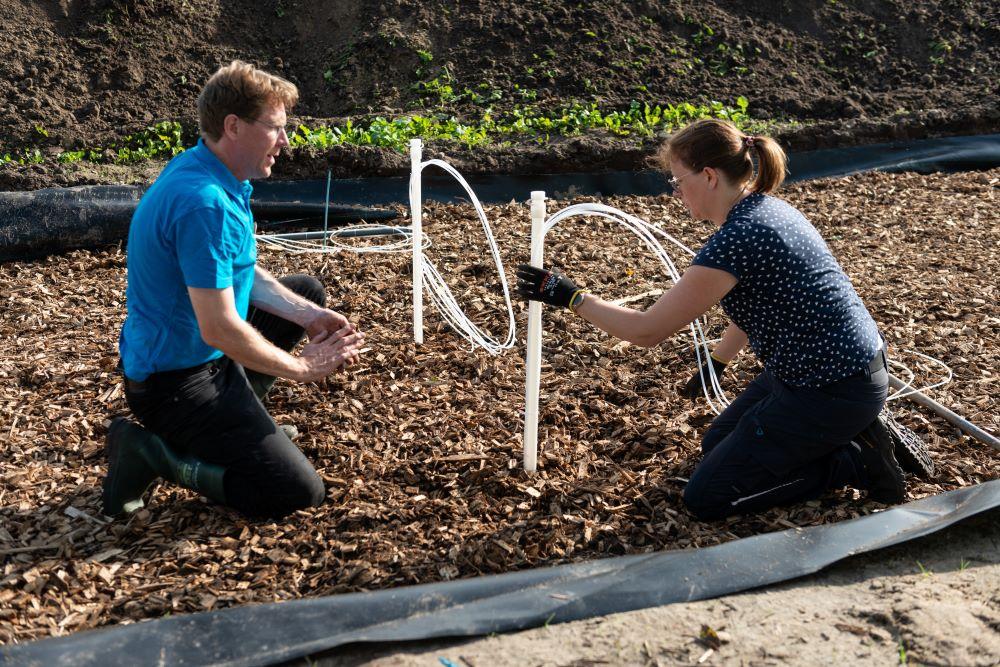Bioreactor with woodchips reduces nitrogen levels in ditches
Do wood chips help to clean up water in ditches? A range of organisations and government authorities are currently investigating this issue in Westerbeek in the Dutch province of Noord-Brabant. The initial results are positive.

There is still too much nitrogen in surface water in many places. Agriculture is an important source, particularly as a result of fertilisation: nitrate enters the ditches, for example through drainage pipes.
Fertiliser policy focuses primarily on tackling the issue at source. In addition, on land where nitrate leaches easily, it could also be removed from the drainage water. That is why, in Westerbeek (in the municipality of Land van Cuijk), a bioreactor with wood chips is being tested to remove nitrate from drainage water.
The drainage water from the agricultural land enters the bioreactor. The wood chips in the reactor boost bacteria that are naturally present in the soil. They can convert nitrate into harmless nitrogen gas. “So we can allow clean water to flow into the ditch again,” says Inge van Driezum, a researcher in groundwater quality and protection at KWR, one of the parties involved.
Nitrogen has a negative effect
Because plants do not absorb everything, fertiliser is left in the soil after crops are grown and some of it leaches into ditches through drainage pipes. Excess minerals – such as nitrogen – are not good for water quality. Among other things, they feed algae and further the excessive growth of plants and duckweed, whereas we want, and need, to improve water quality in the Netherlands.
"The woodchip reactor is simple and relatively inexpensive and, at the same time, very effective. You can have a major impact on water quality and, at the same time, you don’t have to impose enormous restrictions on agriculture,” says Stefan Jansen, a microbiologist at Deltares.
“The advantage of the approach is that you can install the reactor underground in places affected by this type of problem,” says Frank van Herpen, the project leader from the Aa and Maas water authority. The reactors are filled with wood chips from trees in the vicinity and they are expected to work for about ten years before needing to be replaced.
Experience in other countries
Similar trials with wood chips have been conducted in Denmark and the United States, where nitrogen levels in the drainage water leaching into ditches were cut by 20 to 40 percent. With the trial in Westerbeek, knowledge institutes are working with the water authority to investigate how the bioreactor with wood chips works in the typical Dutch situation. A similar test array has also been set up in Limburg and there are plans for a test in the Province of Noord-Holland.
Several organisations involved
The trial brings together research institutes Deltares, KWR Water Research Institute, the National Institute for Public Health and the Environment (RIVM) and Wageningen University & Research.
It is being funded by the Aa and Maas water authority, the Zuiderzeeland water authority, the Foundation for Applied Water Management Research (STOWA), the Ministry of Infrastructure and Water Management, the Ministry of Agriculture, Nature and Food Quality, and the provinces of Noord-Brabant and Flevoland.



